Here’s Why ‘Jennifer’s Body’ Is The Best Horror Movie Most People Haven’t Seen
Jump scares, feminist ideals, funny one-liners, and more— read on to discover all the reasons why “Jennifer’s Body” is the best hidden gem horror movie.

When Jennifer’s Body (2009) first hit the box office, the film flopped despite its overhyped advertising campaign based on Megan Fox’s sex appeal. The marketing of the movie also left a bad taste in the public’s mouth for several years. No one wanted to give it a second chance because it was seen as a “twilight for boys,” and the overly emphasized lesbian kissing scene seemed to indelibly mark it as an exploitation film of the 2000s for teenagers.

In an Entertainment Tonight interview between writer Diablo Cody and Megan Fox (the actress playing lead character Jennifer Check), Diablo explains the severity of the backlash upon release and how hard all the negative film criticism was:
It was a commercial failure, and I was savaged personally. It wasn’t just having a professional failure. It was hard and I had written about it a lot and I had actually gone through therapy because of that experience. I would see actual peers of mine, other writers and other directors making fun of me and the movie, I guess assuming I wouldn’t see the tweet. But it was like, ‘Oh my god. I’m being attacked from the inside.’ And critics were awful.
Megan adds further: “For me, what was surprising was I felt like they didn’t actually watch the movie. Like, how could they review it the way that they did after watching the movie? I do feel like obviously it was mismarketed.”
Obviously, some revisionist history is necessary. It’s time for a new perspective. Is this horror movie a pop culture failure or a cult classic? Is it a movie designed just to amuse the male gaze and young men or actually a shining jewel of feminist cinema that a male audience wouldn’t even get? Point-blank: Jennifer’s Body director Karyn Kusama made a black comedy masterpiece that manages to be laugh-out-loud funny, scary, and perfectly visually and narratively paced. Jennifer’s Body deserves cult status, and here’s why.
It’s a good scary movie.
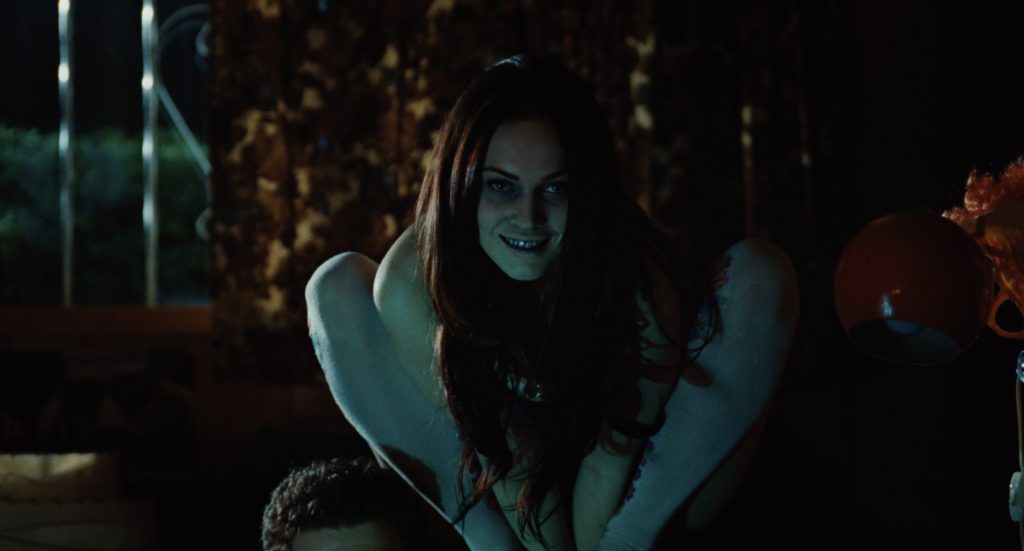
Because the film has so many other amusing aspects, it’s easy to forget that Jennifer’s Body is also just a good horror movie and has an important role in the horror genre. The demonic possession by Succubus of Jennifer Check is creepy, and there are genuine jump scares carefully placed throughout the movie and a great deal of body horror. Let’s not forget that Jennifer’s victims are torn apart, their human flesh devoured to sustain Jennifer’s vampiric need for humans.
Some horror fans might not like all the gonzo techniques, flippant humor, and Easter eggs of visual silliness placed throughout the movie, as they take the viewer out of the complete horror mindset, but that’s the point—it’s not just a scary movie; it’s a dark comedy, too with many clever and whimsical tangents about coming of age as a teenage girl in the 2000s.
And it’s a very funny film!
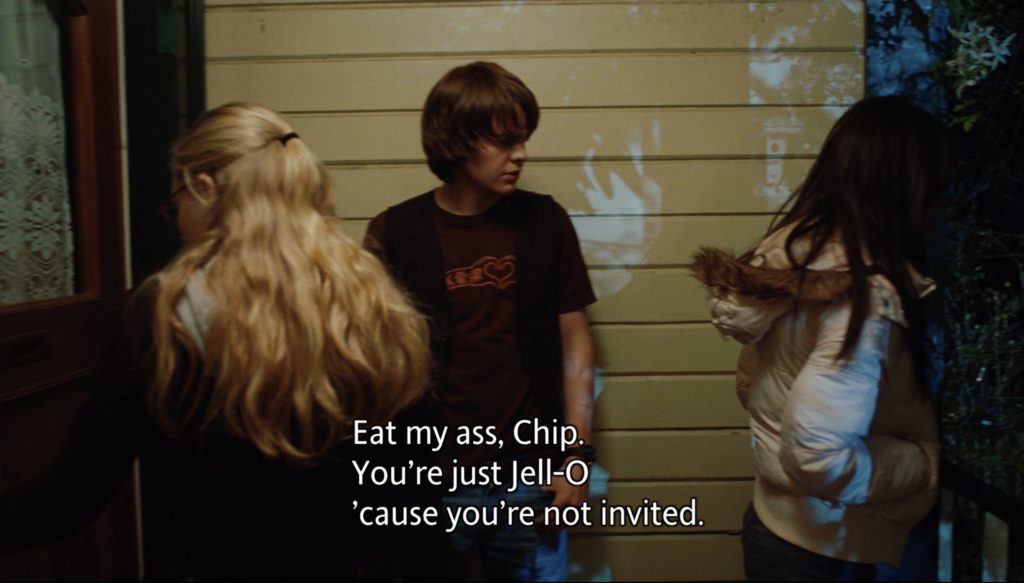
Jennifer’s Body is filled with dark and witty dialogue. Consider this conversation between Needy and Jennifer:
Needy: You know what? You were never really a good friend. Even when we were little, you used to steal my toys and pour lemonade on my bed.
Jennifer: And now I’m eating your boyfriend. See? At least I’m consistent.
Or when Adam Brody’s character, Nikolai Wolf, explains darkly and hysterically why he has resorted to murder and satanic sacrifices.
Nikolai: Do you know how hard it is to make it as an indie band these days? There are so many of us, and we’re all so cute and it’s like if you don’t get on Letterman or some retarded soundtrack, you’re screwed, okay? Satan is our only hope. We’re working with the beast now. And we’ve got to make a really big impression on him.
It’s also filled with memorable one-liners. Some fan favorites:
- “Hell is a teenage girl.”
- “You smell like Thai food.”
- “You’re penis cheese!”
- “You’re lime-green Jell-O, and you can’t even admit it to yourself.”
- “PMS isn’t real, Needy; it was invented by the boy-run media to make us seem like we’re crazy.”
The screenplay makes poignant points about friendship.

Female friendship is a paramount plot driver in the film. Jennifer and Needy are best friends forever; however, like Mean Girls (2004), the movie confronts the wild political machinations of teenage girls’ friendships. The portrait of friendship that emerges is complex and filled with dramatic pathos about power dynamics and growing out of friendships.
The visuals are memorable.
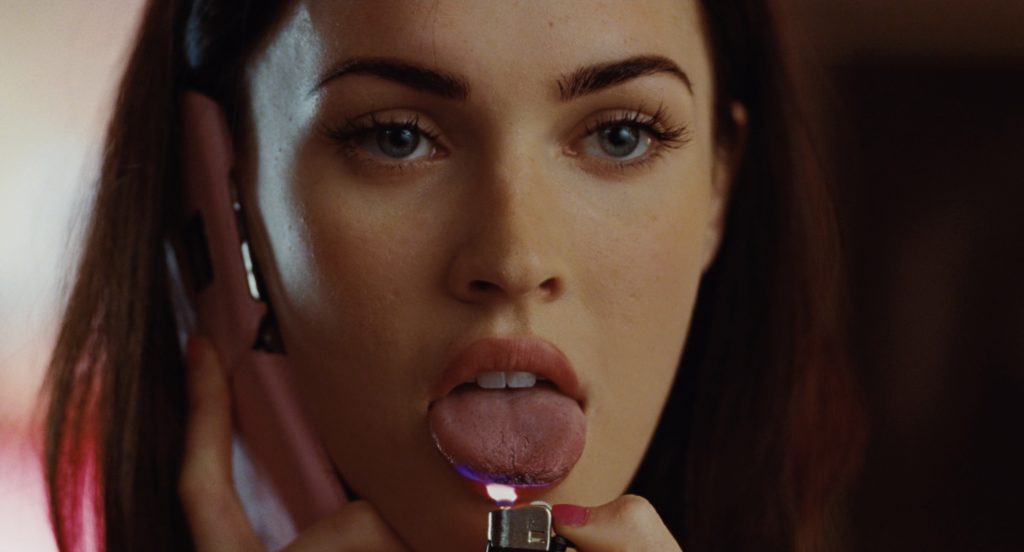
Many moments from the film have become important staples in online visual culture. The most famous image, which was a viral touchstone on Tumblr culture throughout the 2010s, was a GIF of Megan Fox’s character lighting her tongue on fire while saying “I’m a God.” The costume design is also a staple now, and the spring formal dresses Jennifer and Needy wear toward the movie’s end have inspired many Halloween costumes.

Needy Lesnick’s narration is on point.
The way Amanda Seyfried’s character, Anita ‘Needy’ Lesnicki, narrates the story hooks you in. The movie starts with Needy’s narrating the fact that she is now in an insane asylum and gets “more letters than Santa Claus, Zac Efron, and Dr. Phil combined.” The audience is instantly curious. Why is this young woman in an asylum? The way the screenplay unravels the answer to this question is very satisfying and perhaps even uplifting, or at least energizing. It’s also interesting because the narration makes you wonder if the filmmakers will be able to pull it all off, and by the closing sequence they certainly do.
Chris Pratt has a cameo.

Chris plays Officer Roman Duda, a cadet in training, and he’s a funny farce of toxic masculinity that has had a relationship with or is dating Jennifer, though Jennifer hardly acknowledges their relationship in the movie. Jennifer’s complete dismal of her boyfriend in the movie is representative of a larger theme in the film, mainly how throughout Jennifer’s coming of age story boys have almost nothing to do with her story.
Feminism: It’s a movie about eating boys.
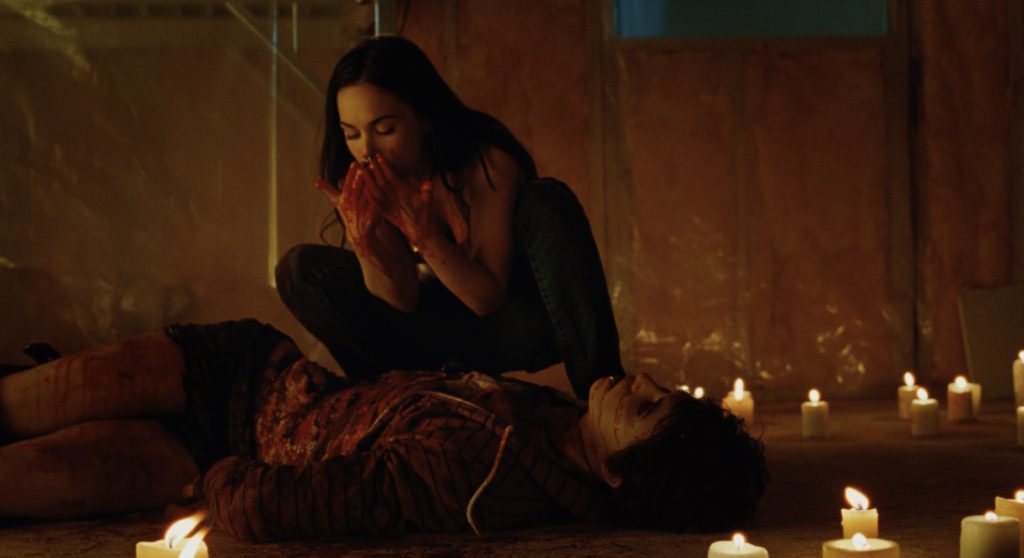
The fact that Jennifer’s Body was marketed to young men is ironic on so many levels. Imagine seeing the advertisements for this movie in 2009 and thinking you’re going to see some sexy exploitation flick, then watching the movie and realizing: (1) this movie is about women taking power over men and there is no sex; (2) but there are tons of jabs at teenage boys’ aloofness and men’s predatory behavior; (3) the film’s much-marketed lesbianism is more a serious emotional subplot of complex rejection; and (4) the movie is named after a song by feminist rock band Hole.
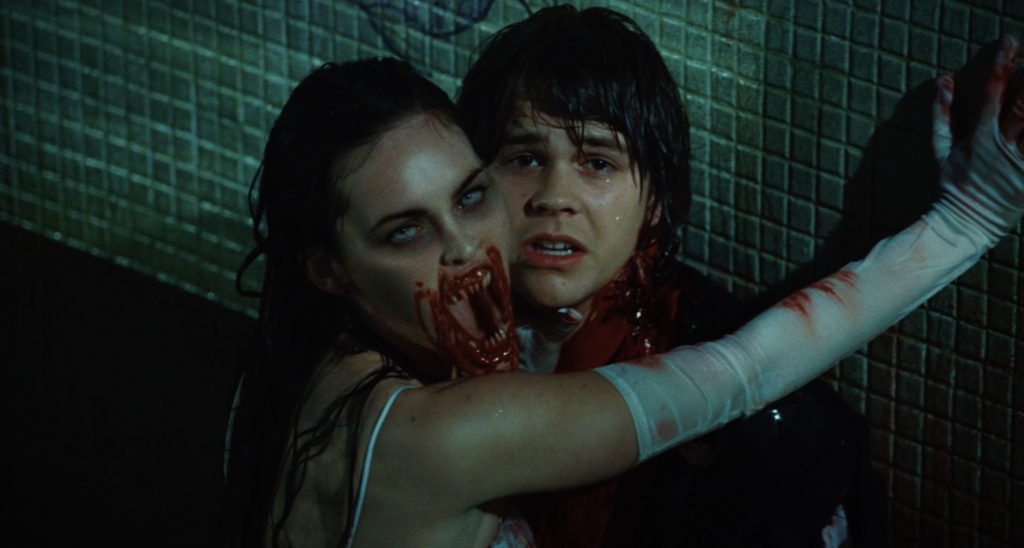
All of this was lost on the film’s early audiences, and Megan Fox says she thinks it was so ahead of its time that the marketing wouldn’t even matter: “The movie was ahead of its time, and while I think there is an argument to be made that it may not have been marketed appropriately, I genuinely don’t believe people were ready for a movie like that at that time in our society and culture.”
This is also what makes watching it now so much fun and so interesting. Made before the MeToo movement, it’s an artifact of a feminism that had not yet been recognized by the culture.
The soundtrack is vintage millennial.
The soundtrack, released by Fueled By Ramen, captures the early 2000s rock milieu in a way that with time has become tinged with nostalgia. It captures the end of the heyday of the Warped Tour punk-rock era, and watching it now almost makes the music feel vintage and better than it ever sounded. Andrew Unterberger in Billboard makes this point well about the soundtrack, which includes Panic! At the Disco, Florence + The Machine, White Lies, Silversun Pickups, Lissy Trullie, and more.
According to Groovy Tracks:
The fact that essentially all of the film’s music was rock-based—as well as the film’s dreamy central antagonists—makes Jennifer’s Body feel something like the end of an era, before hip-hop and EDM would take over as the default sound of youth culture in the decade to come.
There is also the memorable fictional indie band Low Shoulder with their popular anthem “Through the Trees.” The song was made just for the movie, and it’s insanely catchy. The lyrics also reflect a core part of the narrative’s themes:
All alone in an empty room
Nothing left but the memories of when I had my best friend
I don’t know how we ended up here
I don’t know, but it’s never been so clear
We made a mistake, dear
And I see the broken glass in front of me
I see your shadow hangIng over me
And your face, I can see…
The movie’s meta-narrative also has lessons.
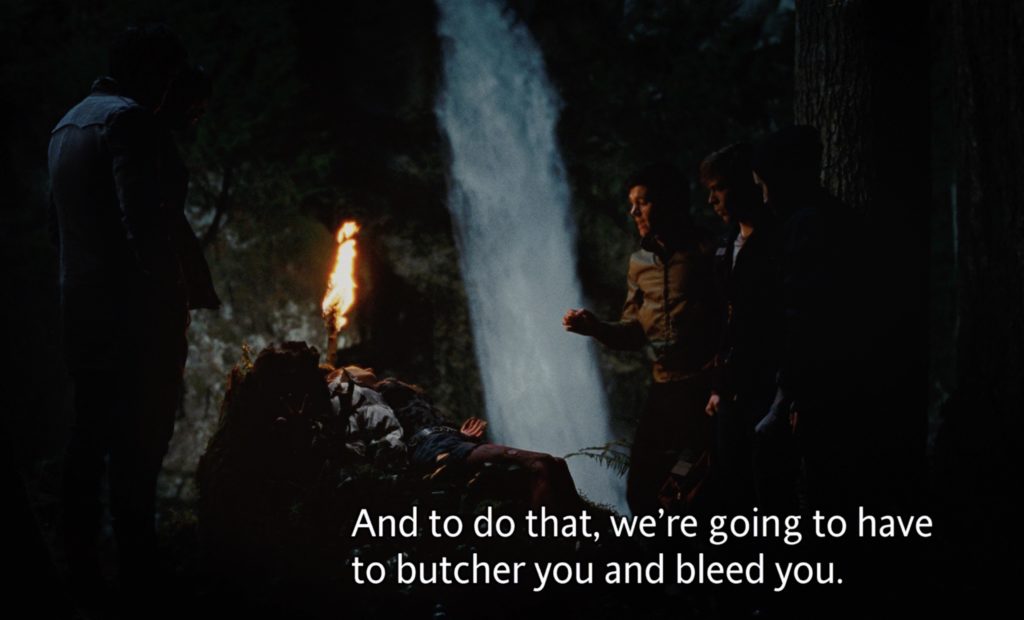
Megan Fox had a “genuine psychological breakdown” while making the film, and screenwriter Diablo Cody basically had to recreate her identity after it because of all the backlash. Megan explains it like this:
I realized that in filming that scene where they sacrifice me, that for me, that was really reflective of my relationship with movie studios at that point. Because I felt like that’s what they were willing to do, to literally bleed me dry. They didn’t care about my health, my well-being, mentally, emotionally, physically—at all. They were willing to sacrifice me physically as long as they got what they wanted out of it, and it didn’t matter how many times I spoke up and said, ‘I’m hurting. This isn’t right. I need someone to protect me. This is going on. Someone needs to listen.’ It didn’t matter at all.
For Cody, Twitter was just becoming a thing, and all the negative backlash about the film led her to basically stop making movies and start a new life. So many of the movie’s themes and obstacles were being reflected in the lived experience of the people making the movie, which adds another interesting layer.
The plot is so cohesive and therefore so satisfying.
Like other high-school movies, namely Heathers (1989) and Mean Girls (2004), Jennifer’s Body has such a cohesive and well-contained narrative structure that it is inherently easy and fun to watch because it is so formulaic. The plot plays off traditional high-school movie tropes, so it feels instantly familiar and relatable, but then it throws in doses of originality in form of its feminist symbolism, violence, and dark humor that make it easy to watch and deeply compelling.

It makes sense that Jennifer’s Body confused audiences when it came out—it’s a movie that operates on several thematic registers. It’s still poised to be misunderstood even decades after release, and that is precisely why everyone should give it another watch—or even their first watch.
